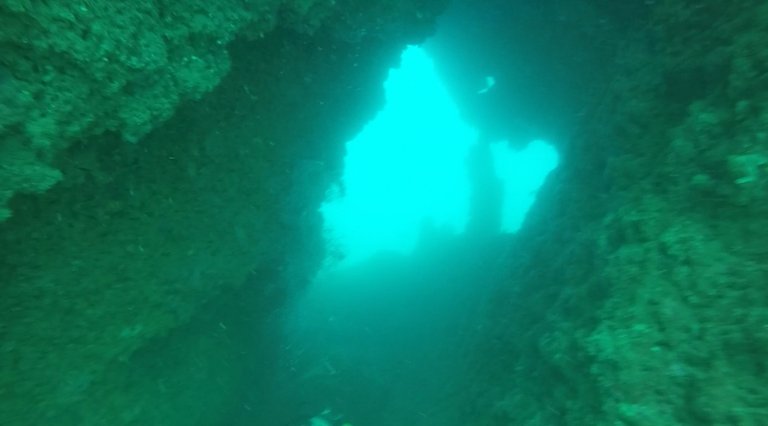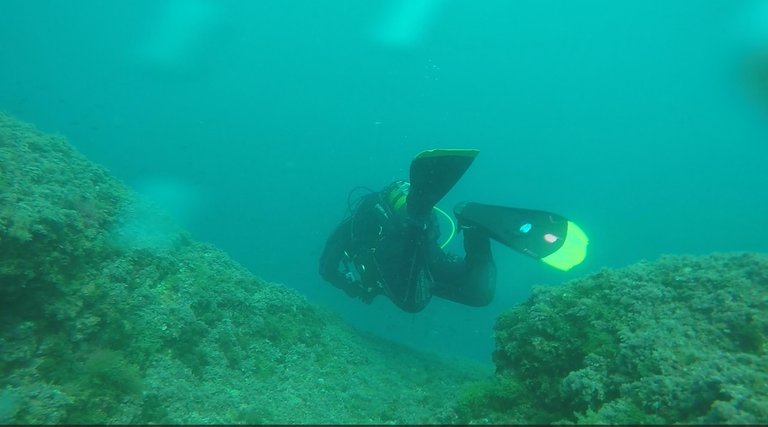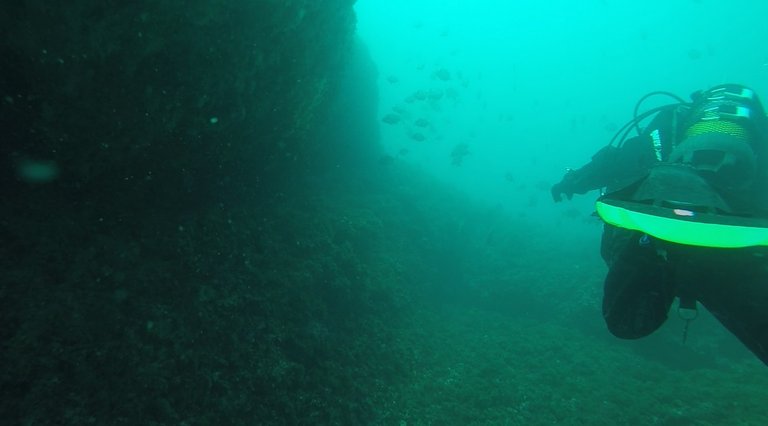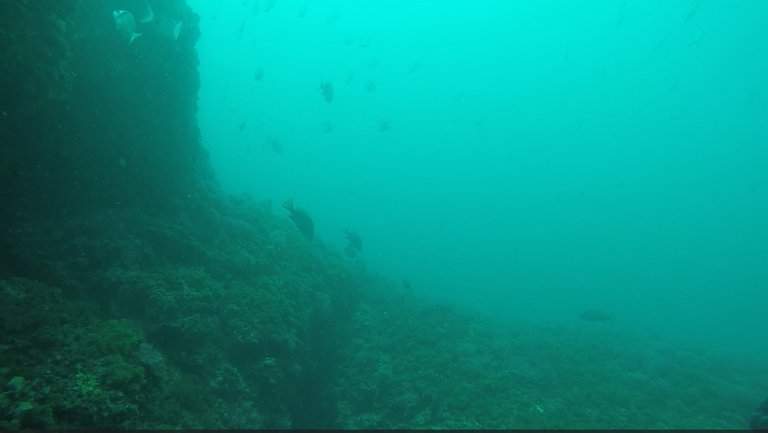Shoal of croaker fish/meagre (Argyrosomus regius) while diving at 22 meters depth 🐟🌊

The poor sharpness of the video is both due to the facts that the water was a bit milky (because of the sea stirred up) and due to penetration of light rays in water, in which at 22 meters depth, the environment is only visible in yellow and greenish colors, since red and orange are the first colors in the light spectrum to be lost when you dive.




As you know, the croaker fish (Argyrosomus regius) is a very appreciated fish in gastronomy and also, for those of us who dive, it's not common to find so many specimens together (at least in my case it has not been) and of this considerable size (they were around 1 meter in length).
They are nocturnal and quite voracious fish and their diet is carnivorous, their prey being crustaceans, mollusks, worms and fish (mainly gray mullets and sardines), sheltering or roaming around in the morning, very close to their dens, as was the case in this video.

In addition, in the deep crevice they had a neighbor and lived together with a forkbeard (Phycis phycis), which meat they say is delicious (although I have never tried it).
As a curious fact, baby croaker fish hide inside the mother's mouth as soon as they see any danger.
Video recorded with a GoPro Hero 8.
Photographs are screenshots taken from my video.
Sources on which I relied to give some accurate info about light spectrum under the sea: (1), (2)
Source on which I relied to give some accurate info about croaker fish/meagre (Argyrosomus regius): (1), (2), (3)
Congratulations, your post has been added to Pinmapple! 🎉🥳🍍
Did you know you have your own profile map?
And every post has their own map too!
Want to have your post on the map too?
We appreciate your work and your post has been manually curated by zoology team (oscurity,nelinoeva) on behalf of Amazing Nature Community. Keep up the good work!
Thanks guys, @hive-127788. @oscurity, @nelinoeva! Much appreciated! 🙂
Congratulations @dresden.theone! You received the biggest smile and some love from TravelFeed! Keep up the amazing blog. 😍 Your post was also chosen as top pick of the day and is now featured on the TravelFeed.io front page.
Thanks for using TravelFeed!
@lesiopm (TravelFeed team)
PS: You can now search for your travels on-the-go with our Android App. Download it on Google Play
Thanks for spreading love! 😊